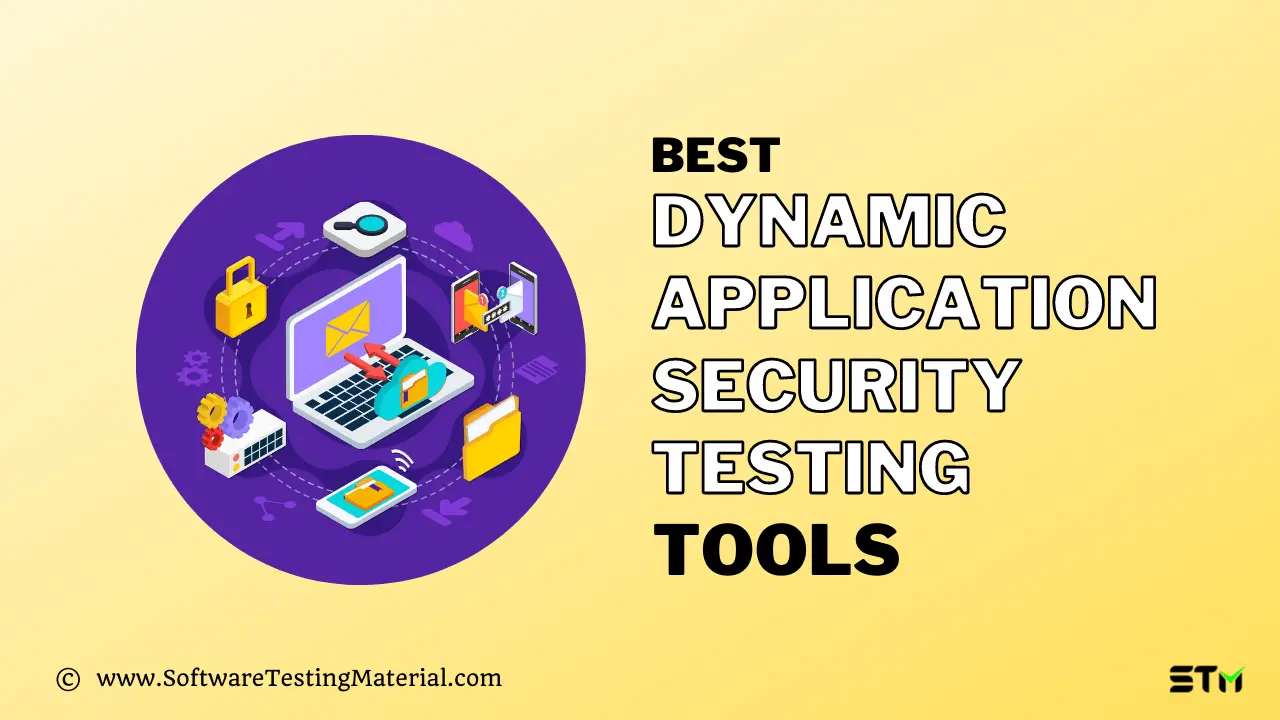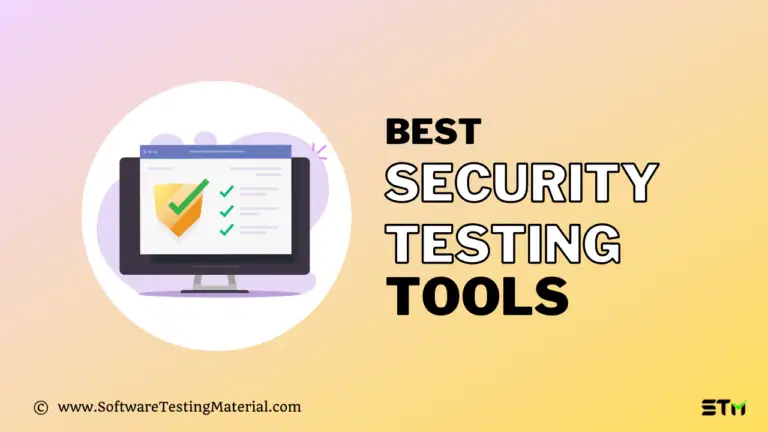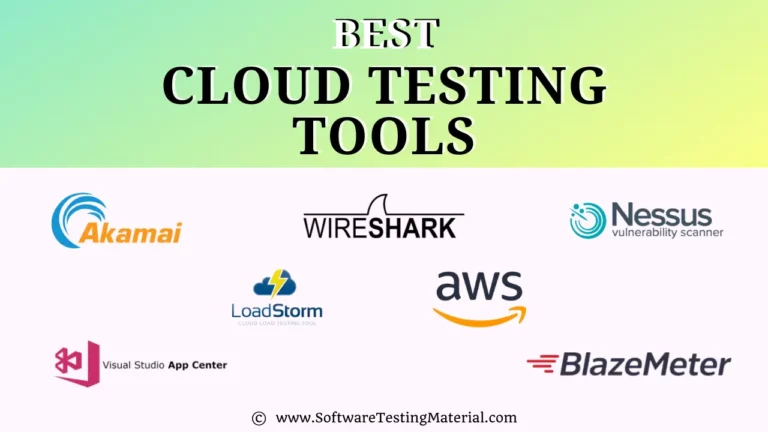11 Best Dynamic Application Security Testing (DAST) Software for 2025
Are you looking for the best Dynamic Application Security Testing (DAST) Software? We’ve reviewed and compared the best DAST Software out there.
Web applications run various mission-critical business processes today, from e-commerce stores to internal financial systems. While these web applications can help in dynamic business growth, they also often harbor potential weaknesses and risks that, if left unidentified and unresolved, could quickly lead to costly data breaches.
In order to address these growing issues, businesses are increasingly deploying dynamic application security testing (DAST) software as part of a more security-forward approach to web application development.
Dynamic application security testing (DAST) software automates security tests for a variety of real-world breaches. These tools typically test HTTP and HTML interfaces of many web applications. It is a type of black-box testing method, meaning it is performed from the outside.
Companies use these tools to identify vulnerabilities in their applications from an external perspective to better simulate threats most easily accessed by hackers outside their organization. There are similarities between DAST tools and other application security and vulnerability management solutions, but most other technologies perform internal tests and code analysis instead of focusing on black-box testing.

In this article, we will discuss the best Dynamic Application Testing Tools available in the market to help security professionals detect security weaknesses or vulnerabilities within an application. Follow your company’s regulations, such as HIPAA or PCI-DSS in order to choose the right tool.
Comparison of Dynamic Application Security Testing (DAST) Tools
| Tool Name | Logo | Best for | Link |
|---|---|---|---|
| Invicti |  | all web application security needs | Learn more |
| Acunetix |  | securing your websites, web applications as well as APIs | Learn more |
| Astra Pentest | web, and mobile applications, as well as API pentesting | Learn more | |
| PortSwigger |  | identifying the latest vulnerability | Learn more |
| Detectify |  | scanning for 2000+ vulnerabilities | Learn more |
Let’s get started.
What is Dynamic Application Security Testing (DAST)?
Dynamic application security testing (DAST) is one of the many technology of security testing solutions. DAST is a form of black-box security testing, meaning it simulates realistic threats and attacks. This differs from other forms of testing such as static application security testing (SAST), a white-box testing methodology used to examine the source code of an application.
DAST includes a number of testing components that operate while an application is running. Security professionals simulate real-world functionality through testing the application for vulnerabilities and then evaluate the effects on application performance. The methodology is often used to find issues near the end of the software development lifecycle. These issues may be tougher to fix than early flaws and bugs are, but those flaws pose a larger threat to critical components of an application.
DAST can also be thought of as a methodology. It involves periodic inspections as updates are pushed live or changes are made before release. While a penetration test or code scan might serve as a one-off test for specific vulnerabilities or bugs, dynamic testing can be performed continually throughout the lifecycle of an application.
With the help of Dynamic Application Security Testing software, you can test for the security of SAP and CRM web apps. These tools are capable of generating the log files that will be helpful in debugging the security issues in SAP and CRM web apps.
Why Do You Need Dynamic Application Security Testing (DAST) Software?
Web application attacks might not garner the same attention as ransomware exploits, but they are a serious threat for businesses of all sizes. The most common web-based attack is SQL injection. This allows an attacker to gain complete control of a company’s web applications database by inserting arbitrary SQL codes into a query. Another attack is cross-site scripting (XSS), in which attackers insert their code into a web app.
They may then steal user credentials and cookies or other sensitive information without the company or user being aware. Hackers target content management systems and online shopping platforms because these systems can contain a number of vulnerabilities that can be easily exploited repeatedly once they are discovered. The security team might not be able to detect a web app attack that is ongoing for a while. The attacker can continue to cause havoc and steal sensitive corporate or client data from the web application’s database.
Even relatively inexperienced hackers can launch these types of attacks, and businesses are often the ones most affected. They often look for easy-to-exploit vulnerabilities in web applications, which they can use to launch a cyberattack. DAST tools give security and development teams instant visibility into application behavior, and possible weaknesses before hackers capitalize on them.
While early testing solutions approach testing from the developer’s standpoint, DAST approaches testing from the perspective of a hacker. These tools simulate real threats to a functional, running application. Security professionals can simulate common attacks such as SQL injection and cross-site scripting or customize tests to threats specific to their product. These tools offer a highly customizable solution for testing during the later stages of development and while applications are deployed.
Flexibility: Users can schedule tests as they please or perform them continuously throughout an application’s or website’s lifecycle. Security professionals can modify environments to simulate their resources and infrastructure to ensure a realistic test and evaluation. They’re often scalable, as well, to see if increased traffic or usage would affect vulnerabilities and protection.
Companies with more threats may require more testing. Security professionals may identify a threat specific to the health care industry or financial sector and alter tests to simulate the threats most common to them. These tools offer some of the most realistic and customizable solutions to the threats present in network or web application.
Comprehensiveness: Threats are continuously evolving and expanding, making the ability to simulate multiple tests more necessary. DAST offers a versatile approach to testing, wherein security professionals can simulate and analyze each threat or attack type individually. These tests deliver comprehensive feedback and actionable insights that security and development teams use to remediate any issues, flaws, and vulnerabilities.
These tools will first perform an initial crawl, examination, applications, and websites from a third-party perspective. They interact with applications using HTTP, allowing them to examine applications built with any programming language or any framework. Additional tests can be run, depending on the solution, but all the results and discoveries can be stored for actionable remediation.
Continuous assessment: Agile teams and companies that are relying on frequent updates to applications should use DAST products with continuous assessment capabilities. SAST tools will provide more direct solutions for issues related to continuous integration processes, but DAST tools will provide a better view of how updates and changes will be seen from an outside perspective. Each new update may pose a new threat or unveil a new vulnerability; it is, therefore, crucial to continue testing even after applications have been completed and deployed.
DAST also requires less access to potentially sensitive source code within the application. It sees the situation from an outside perspective as threats attempt to gain access to systems or sensitive information. This can make it easier to perform tests continuously without requiring individuals to access source code or other internal systems.
What is SAST?
Static application security testing (SAST) tools are white-hat testing solutions, meaning they require access to source code to function. SAST tools help software developers and security professionals analyze an application’s underlying source code for flaws and vulnerabilities.
White-box testing requires users to possess information related to code and security architecture in order to examine non-compiled code. SAST tools are notorious for flagging safe code (false positives) because they don’t actually execute the code. Still, these tools are highly effective in identifying issues early in the software development lifecycle.
Because SAST tools are capable of discovering source code issues, they’re commonly used by agile and DevOps teams. These issues are typically easy to fix, but don’t examine the application from a functional standpoint. Those issues require additional testing tools that allow developers to view the application from an outside hacker’s perspective.
It also provides information about security vulnerabilities in a software development environment without requiring the developer to recreate the affected code in order to fix the issue. A software development company can perform this type of testing internally by building and instrumenting the existing software to perform a vulnerability assessment and patch management. Companies that perform this type of testing can save both time and money by avoiding the expense of reworking the code to repair security flaws.
What is IAST?
Interactive application security testing (IAST) is a testing method that checks the security of an application while it’s actually being used (by a human user or an automated testing tool). It reports vulnerabilities in real-time, which means it does not add any extra time to your CI/CD pipeline. IAST works inside the web application, which makes it different from both SAST and DAST. This testing also doesn’t test the entire application or codebase, but only whatever is required by the functional test. It works best when deployed in a QA environment with automated functional tests running.
It’s important to note that IAST doesn’t distinguish between different kinds of vulnerabilities – it tests all the common vulnerabilities that can be found in web applications. However, it can detect and isolate specific types of web application attacks, such as SQL injection, cross-site scripting, remote code execution, and file corruption. Through several highly customizable features, IAST continues to prove a superior option compared to the traditional mode of web application attack detection.
What is RAST?
Like IAST, RASP (Runtime Application Security Protection) works inside the application, but it is less a testing tool and more a security tool. It’s plugged into an application or its runtime environment and can control application execution.
This allows RASP to protect the app even if a network’s perimeter defenses are breached, and the apps contain security vulnerabilities missed by the development team. RASP lets an app run continuous security checks on itself and respond to live attacks by terminating an attacker’s session and alerting defenders to the attack.
RASP’s advantage over other security tools is that it can provide accurate results continuously. When an application is developing, it must pass various tests to be deemed secure. These tests are run by various third-party testers, who run them one at a time in real-user environments. If the tests fail to pass, then the security tool will fail as well. RASP works within the test environment to ensure the applications are secure at runtime.
DAST Vs. SAST
SAST and DAST are two different classes of security testing tools that take a unique approach to solving issues related to application security. SAST software analyzes an application’s underlying components to identify flaws and issues in code itself. DAST tools test working applications for outwardly facing vulnerabilities in the application interface. Both tools are entirely necessary but analyze application security in very different ways.
| SAST | DAST |
|---|---|
| White box security testing | Black box security testing |
| Typically supports all kinds of software | Typically scans only apps like web applications and web services |
| Finds vulnerabilities earlier in the SDLC | Finds vulnerabilities toward the end of the SDLC |
| Less expensive to fix vulnerabilities | More expensive to fix vulnerabilities |
Why Should Businesses use Dynamic Application Security Testing Software?
Manual auditing of all your web applications is a difficult and time-consuming procedure. Automated vulnerability scanning tools allow businesses to always be on the lookout for new attack paths that hackers can use to access their web applications or sensitive data.
Within minutes, an automated web application scanning tool can scan your entire network web application, identify all the files accessible from the Internet, and simulate hacker activity to discover vulnerable components. It also assesses the code which makes up a web application, allowing it to identify potential vulnerabilities that hackers might exploit.
List of Dynamic Application Security Testing Tools
The main details of each software are listed below, but if you’re in a hurry, here’s a quick list of the best DAST Software.
If you’d like to see our in-depth analysis, keep reading.
#1. Invicti

Best for all web application security needs.
Invicti is one of the leading automated web vulnerability scanning solutions that provides web vulnerability scanning, vulnerability assessment, and vulnerability management. It offers complete protection against security flaws in web applications.
Invicti has the ability to scan for security vulnerabilities and to detect and repair security vulnerabilities. It is an easy-to-use, automated, fully configurable web application vulnerability scanner that allows you to quickly scan various web applications, web services, and websites and identify potential security weaknesses.
Invicti offers a simple interface. Behind this simple interface, there is a suite of advanced scanning technologies used to power all the processes. It permits the implementation of security probes into every web application to find out all security flaws. This, coupled with proof-based scanning, makes it easy to discover and remedy all issues on their onset.
Features:
- It supports collaboration, automation, and integration with other security tools.
- Invicti also helps your employees to access to critical business information securely.
- It has an advanced scanning engine that can identify complex vulnerabilities.
- This tool can be easily integrated with your existing SDLC environment because of its extensive list of third-party integrations.
- It allows users to password-protected sites and apps with no problem as Invicti handles authentications and scans for vulnerabilities without complex workarounds.
- You can perform continuous Web application security testing even while your system is turned off and on. You don’t have to shut down the system just to perform a vulnerability scan.
Verdict: Invicti is one of the best DAST tools by which automatically crawls and scans all types of legacy & modern web applications, so you can stop security threats from slipping under the radar. It offers a simple learning curve and great usability that enables users to spend more time securing their applications and less time learning how to use the tool. With this tool, users can also optimize the pen-testing effectiveness. Invicti is a great choice for web applications security testing and penetration testing.
#2. Acunetix

Best for securing your websites, web applications as well as APIs.
Acunetix is amongst the topmost web vulnerability testers, which help in handling various security threats in real-time. It is an integrated web application vulnerability scanner that helps to detect and resolve any vulnerabilities present on the network immediately. The software helps users work collectively and successfully manage the overall security system of their IT infrastructure effectively. It is designed with a very user-friendly interface so that it is simple for everyone to use. Moreover, the product is loaded with some of the most advanced security protection features to scan all the devices attached to the network.
Don’t miss our detailed review on Acunetix
It combines dynamic and interactive testing to automate vulnerability detection for websites, web applications, and APIs. Acunetix utilizes a unique scanning engine known for its speed and accuracy in vulnerability detection.
Features:
- It helps to scan all the devices attached to the local network. This helps to resolve all the security issues that may occur as a result of security vulnerabilities.
- It provides actionable results with validation checks that confirm which vulnerabilities are real and not false positives.
- This tool can detect over 7,000 vulnerabilities such as SQL injections, XSS, misconfigurations, weak passwords, exposed databases, and out-of-band vulnerabilities.
- It offers advanced macro recording technology by which users can scan complex multi-level forms and password-protected areas of their site.
- It integrates with your current tracking system for a built-in vulnerability management function.
Verdict: Acunetix has been recognized as an industry leader in vulnerability scanning for more than a decade. It can seamlessly be integrated with your current network systems. You can also schedule and prioritize the full scans or incremental scans based on the traffic load and critical business requirements.
#3. Astra Pentest

Best for web, and mobile applications, as well as API pentesting.
Astra’s pentest services come with an excellent automated vulnerability scanner amped with a security engine that is constantly updated based on intel and CVEs.
Astra’s expert manual and automated pentesting tests for business logic errors, SQL injections, payment manipulation, and escalation hacks.
Astra’s vulnerability management services help you regulate, prioritize, and remediate vulnerabilities with ease. The tool is also CI/CD integration friendly can be integrated with major applications such as Jira and Slack.
Features:
- 3500+ security tests by intelligent vulnerability scanner that emulates hacker behavior
- OWASP Top 10 and SANS 25 Testing
- In-depth Pentest by security experts
- Vetted scans to ensure zero false positives
- Follows NIST and OWASP Testing Methodologies
- Managed automated and manual pentesting
- Automated vulnerability scanning with scan behind login feature.
- One-click actions for report download, email, and more.
- Engineer and developer-friendly dashboard.
- Contextual bug fix collaboration between your developers and security team.
- Security test cases that help with SOC2, GDPR, HIPAA, PCI-DSS, and ISO 27001 compliance.
- A publicly verifiable Pentest Certificate after every successful pentest wins the trust of customers & partners.
Pricing: Astra’s pentest offering for web applications starts at $99 per month and extends to $399 per month. They also offer an extensive pentest package that comes at a yearly price of $4,999.
Verdict: Astra Pentest comes with some incredible features that address every customer requirement. Their services are also a favorite in terms of the stellar customer support provided by security experts.
#4. PortSwigger

Best for identifying the latest vulnerability.
PortSwigger offers various tools for web application security, web application testing, and scanning. This web-based vulnerability scanning tool for the web is designed to identify vulnerable websites and their applications to help organizations detect threats that could compromise their critical business data.
By deploying PortSwigger Burp Suite, you can get real-time insight into the way people use your system and what they look for when performing searches. In addition, this tool is ideal for identifying security vulnerabilities in order to solve them. The suite also includes an automated scanner that scans all files and directories for known rules, which you can then prioritize according to severity.
It also provides alerts to administrators in case of unauthorized access, system downtime, or network infiltration. By configuring the tool with the parameters necessary for port scanning, you can provide notification to your system administrator or IT staff whenever there is a serious threat of security intrusion.
Features:
- Burp Suite Enterprise Edition provides the features such as web vulnerability scanning, functionality for scheduled & repeat scans, and CI integration.
- It provides integration with ready-made CI plugins, native Jira support, and a rich API to easily incorporate security within your existing software development processes.
- It provides intuitive security reporting dashboards, role-based access control, and scan reports by email.
- Professional edition has features of a web vulnerability scanner, advanced manual tools, and essential manual tools.
- With the Community edition, you will get only essential manual tools for free.
Verdict: Portswigger provides the most effective firewall, malware and spam removal, and security solution available in the industry today. They have used top industry technology to create their award-winning firewall, malware, and spam removal that will keep your network secure and running smoothly. It is an excellent tool for organizations, testers, and developers. With PortSwigger, you can find security loopholes. It also helps developers to build secure and robust applications.
#5. Detectify

Best for scanning for 2000+ vulnerabilities.
Detectify is a vulnerability scanner that scan web applications. It can scan web applications as well as databases. Stay on top of security and build safer web applications with Dectectify. With this tool, you can stay away from vulnerabilities such as OWASP Top 10, Amazon S3 Bucket, and DNS misconfigurations but also undocumented ones.
Features:
- It offers a deep Scan feature that checks your web apps for vulnerabilities, alerts you as soon as they’re detected, and guides you on fixing them.
- The scanned results offered by Dectectify is accurate as it makes the use of real payloads.
- This tool leverages the combination of industry-leading asset monitoring technology with advanced ethical hacker knowledge to ensure maximum threat prevention and maximum protection for your company or organization.
- It can perform continuous monitoring of sub-domains.
- This tool will alert you in case of threat is detected.
Verdict: Detectify is an online automated scanner that checks your web application for 2000+ vulnerabilities across the web and then monitors for malicious attacks on subdomains. If you are looking to hire a web security service in order to detect and prevent the most recent and advanced web threats, we recommend using Detectify for all of your website security needs. Detectify has developed an intuitive interface that allows you to quickly identify the most common vulnerabilities in any web application and quickly apply a solution for your website.
#6. AppCheck Ltd

Best for automating the discovery of security flaws.
AppCheck offers a leading security scanning platform that automates the discovery of security flaws within organizations’ websites, applications, networks, and cloud infrastructure. Its vulnerability management dashboard can be completely configurable according to your current security posture.
It offers an intuitive platform and has a flexible configuration. Users can launch scans quickly. It also provides reports that contain an elaborated and easily understandable remediation service on vulnerabilities. With this tool, businesses can automate the discovery of security flaws within their websites, applications, network, and cloud infrastructure.
Features:
- It offers functionality for application and infrastructure scanning.
- This tool integrates seamlessly with common development tools like JIRA and TeamCity. It also includes a JSON API to allow integration with other tools.
- AppCheck can launch scans in seconds using pre-defined scan profiles built by security experts.
- It will help you with securing your entire development life cycle.
- It also includes key features of zero-day detection and browser-based crawler.
Verdict: It is a leading security scanning platform built by leading penetration testing experts. Every AppCheck license offers unlimited users and unlimited scanning 24 hours a day 365 days a year.
#7. Hdiv Security

Best for unified application security.
Hdiv Security is a leading unified application security software that guards enterprise applications against known security vulnerabilities. The services consist of security scans, vulnerability assessment, suggested patches, active monitoring, and so on.
This tool can be used throughout the SDLC to protect the application from various security bugs. It can identify security bugs and business logic flaws.
It provides information on the top threats to the application daily and gives timely alerts. Hdiv detects security bugs in source code before it is exploited, using a runtime dataflow technique to report the file and line number of the vulnerability.
Features:
- Hdiv RASP protects applications during runtime. By building protection during the development process, Hdiv RASP protects applications from the inside, keeping them secure wherever they go.
- It reports the file and vulnerabilities with the help of the runtime data flow technique.
- It can create the integration between the pen-testing tool and the application so that sensitive business information can be communicated to the pen-tester.
- Hdiv helps to implement compliance requirements, such as PCI and GDPR.
Verdict: Hdiv protects applications against Security Bugs and Business Logic flaws throughout the SDLC without changing the source code. To use Hdiv, you will not need any additional hardware components. It can be easily deployed in your application.
#8. AppScan

Best for direct integration into your SDLC.
HCL AppScan Standard protects against web application attacks and expensive data breaches by automating application security vulnerability testing. It helps you to avoid security vulnerabilities using automated dynamic security testing and advanced static analysis – “black box” and “white box” – to detect developing security issues.
It simplifies the interpretation of scan results with scan-specific explanations of each issue. AppScan provides quick remediation and fixes high-priority problems first with streamlined remediation. It makes fixes quickly with the provided remediation steps – including code examples and a task list.
Features:
- It provides the tools for security testing for web, mobile, and open-source software.
- It streamlines collaboration between development and security teams.
- With this tool, you can establish policies throughout SDLC.
- It features management dashboards that help classify and prioritize application assets as per business impact.
Verdict: AppScan delivers best-in-class application security testing tools to make sure businesses and their customers are not vulnerable to attacks. It can be used by developers, testers, product owners, and software consultants for conducting vulnerability assessment, verification, validation, and patch-level assurance.
#9. Checkmarx

Best for application security testing.
Checkmarx is a leading security testing tool. Over 1,400 organizations around the globe rely on Checkmarx to detect and manage risks. It features interactive application security testing.
Features:
- It provides a comprehensive platform that integrates SAST, SCA, IAST, and AppSec Awareness.
- It delivers automated security scanning as part of the DevOps process.
- It is available on-premises, in the cloud, or in hybrid environments.
Verdict: It makes software security essential infrastructure unified with DevOps, and seamlessly embedded into your entire CI/CD pipeline, from uncompiled code to runtime testing.
#10. Rapid7

Best for accurate and reliable DAST testing.
Rapid7 transforms data into insight, empowering IT and security professionals to progress and protect their organizations. It can easily manage vulnerabilities, monitor for malicious behavior, investigates and shut down attacks, or automate your operations. This tool will help you with scanning applications to testing for SQL Injection, XSS, CSRF, etc.
Rapid7 has a library of 90 attack modules that can identify multiple vulnerabilities.
Features:
- It provides real-time remediation and unmatched multi-cloud visibility with DivvyCloud.
- It has features to scan scheduling and blackouts.
- Rapid7 has cloud and on-premises scan engines.
Verdict: Rapid7 will speed your remediation process as well as improve the security posture. It comes with modern UI and intuitive workflows. In addition, it assists users with understanding the compliance risk.
#11. MisterScanner

Best for online website vulnerability scanning.
MisterScanner is an online website vulnerability scanner with automated testing functionality. It provides affordable vulnerability scanning for every business.
Features:
- It supports OWASP, XSS, SQLi, and an SSL Test.
- It offers functions for cross-site scripting, SQL Injection, cross-site request forgery, malware, and 3000 other tests.
- It provides prompt alerts via email or text messages.
- It can test a website for 1000+ security problems used by hackers, and based on these tests; it generates the reports.
Verdict: MisterScanner provides the best in the industry vulnerability scanning to identify issues that can lead to costly security breaches.
Conclusion – DAST Software
DAST tools can be used in all types of environments. Regardless of the programming language, frameworks, or libraries are used for web applications and API; DAST software can scan them all.
Invicti and Acunetix are our top picks for Dynamic Application Security Testing Tools which works well for all businesses.
Related posts:
- Best Vulnerability Assessment Scanning Tools
- Best Penetration Testing Companies
- Best Nessus Alternatives
- Best Burp Suite Alternatives
- Best Penetration Testing Tools
- Penetration Testing Guide
- Best Security Testing Tools
- Best Web Application Testing Tools






